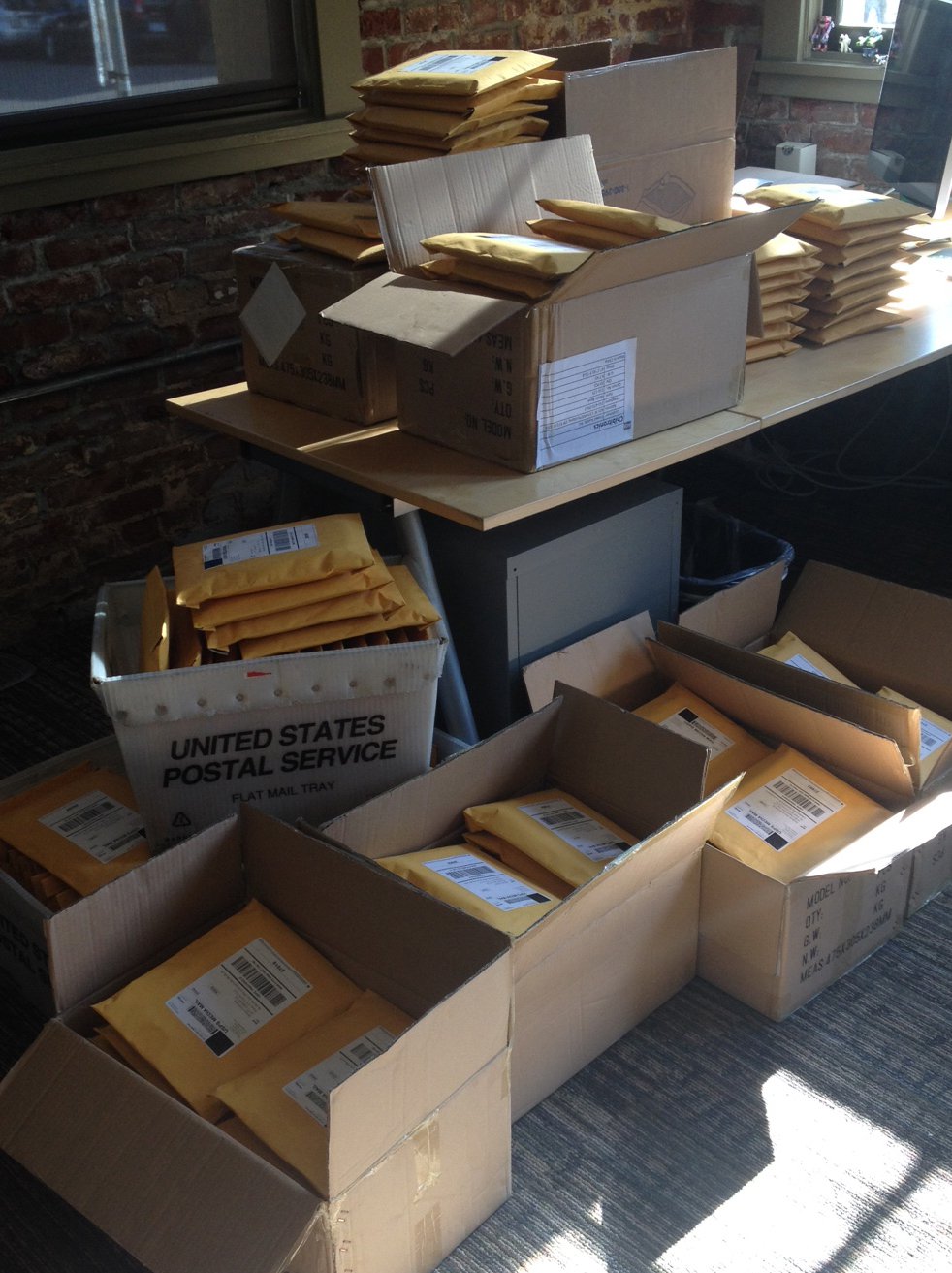Project update 5 of 6
Delivery Update
Dear Backers,
I’m pleased to inform you that all the copies of the Essential Guide to Electronics in Shenzhen have arrived safely in Portland, Oregon. Crowd Supply is now packing and shipping all your orders, so you should receive a shipping confirmation email with a tracking number in the next week or so.
I thought that delivering something as simple as a book on time would be a cake walk. In theory, it should have been as simple as me writing the correct number of zeros on a purchase order to the printer.
But the reality of production was far from simple. One example of the problems encountered in production was the alignment of text on the tabbed dividers between sections. The process limit for text-to-edge alignment from the vendor is ±2mm. This is a pretty typical specification, and the print master was margined accordingly.
However, several pages are tiled into a single A0-sized sheet, and then die cut all in one go. For efficiency reasons, the printer tiled the pages so that the tabs were alternately facing each other — so one page was upright, the next rotated 180 degrees, and so forth. This is overall a very reasonable decision to make, except when you consider the alignment tolerance problem. When the die cutting tool shifts by +2mm for the upright pages, it also shifts by -2mm for the flipped pages.
The end result is that the text between some tabs appeared to be offset by 4mm from each other, leading to a rather random appearance of the divider tab’s text when collated into a single book. Of course, the printing and die cutting machines run so fast that a couple thousand impressions finish in an afternoon; at the scale of this book, you essentially get one shot to test everything. I now had to make the difficult decision of either delaying delivery, scrapping hundreds of kilograms of paper, and re-printing and cutting the tabbed dividers; or employing a team of people to cherry-pick tabbed dividers from various tolerance bins to try and make the book look as good as possible given the material on hand (fortunately, the alignment on each master sheet is different, so this trick was largely possible).
I opted for the latter; I do not relish the idea of sending perfectly good paper to the landfill for minor cosmetic reasons. However, the divider tab text alignment ended up being a manual process, so inevitably there will be some variance on the alignment for some books.
The summation of several small problems similar to the tab alignment problem (and also me forgetting that the first week of May is a Chinese holiday, during which all the factories are closed) caused me to miss the ocean-shipping cutoff date.
So, instead of doing the environmentally friendly thing of delaying the book a couple weeks and shipping books via ocean, I loaded these onto an airplane (creating 10x the carbon emissions), and paid several thousand extra dollars, to get these books to you on-time.
Was that worth it? I go by the "how well do I sleep at night" metric. I decided that losing a couple thousand bucks and contributing to global warming will make me lose less sleep at night than dealing with dozens of angry customers yelling at me for ruining their Shenzhen travel plans because the book arrived too late for their convenience.
Every few days for the past months I’ve gotten an email or tweet from someone urging for an early copy of the book or re-confirming the delivery date because of an imminent trip to Shenzhen. Folks with travel plans to Shenzhen will have spent thousands of dollars planning their trip, whereas folks unhappy with the book will have only spent $30 on this book. There’s a general correlation between the ferocity of complaints versus the amount of money at stake. So I made a judgment call – late delivery would be more substantial than the complaints I might get about minor cosmetic problems.
Now that I know the books are in Oregon and en route to you, I will sleep better tonight. And that’s priceless to me.
The next challenge will be collating all the feedback on the guide. I hope and expect there will be a wish list of additional terms, and plenty of well-researched and constructive feedback on translation errors. Please send your comments to ptt-feedback@kosagi.com. It will be difficult to accommodate all your requests, but I will prioritize correcting factual inaccuracies over content enhancement for the next printing, should it ever happen. Also please keep in mind that even the Chinese cannot universally agree on the translations for some phrases, so if I don’t adopt your suggestion please don’t take it personally.
I sincerely hope you find the book valuable, and that it enhances your experiences in the electronics markets of Shenzhen.
Safe travels!
–b.
